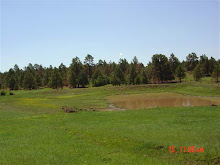EPA is now paying attention to the BP oil spill and on a related note, the chemicals meant to clean it up are raising concern
Friends of the Earth has an online petition asking President Obama to concentrate on renewable energy sources instead of offshore drilling. To sign the petition, click here.
The EPA has established a website regarding the BP oil spill that is devastating the gulf of Mexico.
EPA Press release:
"EPA launches site to inform the public about health, environmental impacts of spill
WASHINGTON – As part of the ongoing federal response to the BP oil spill in the Gulf of Mexico, EPA today established a website to inform the public about the spill’s impact on the environment and the health of nearby residents. The website – http://www.epa.gov/bpspill - will contain data from EPA’s ongoing air monitoring along with other information about the agency’s activities in the region. Also today, Administrator Jackson joined Department of Homeland Security Secretary Janet Napolitano and Interior Secretary Ken Salazar to tour the region. The Administrator will spend the next 36 hours visiting with community groups and meeting EPA staff responding to the spill.
Additional information on the broader response from the U.S. Coast Guard and other responding agencies is available at: http://www.deepwaterhorizonresponse.com
On a related note, Pro-Publica has published an article about concerns regarding the environmental and health impacts of the chemicals BP is using in an attempt to clean up the spill.
by Abrahm Lustgarten, ProPublica - April 30, 2010 5:44 pm EDT
Photo by Chris Graythen/Getty Images The chemicals BP is now relying on to break up the steady flow of leaking oil from deep below the Gulf of Mexico could create a new set of environmental problems.
Even if the materials, called dispersants, are effective, BP has already bought up more than a third of the world’s supply. If the leak from 5,000 feet beneath the surface continues for weeks, or months, that stockpile could run out.
On Thursday BP began using the chemical compounds to dissolve the crude oil, both on the surface and deep below, deploying an estimated 100,000 gallons. Dispersing the oil is considered one of the best ways to protect birds and keep the slick from making landfall. But the dispersants contain harmful toxins of their own and can concentrate leftover oil toxins in the water, where they can kill fish and migrate great distances.
The exact makeup of the dispersants is kept secret under competitive trade laws, but a worker safety sheet for one product, called Corexit, says it includes 2-butoxyethanol, a compound associated with headaches, vomiting and reproductive problems at high doses.
“There is a chemical toxicity to the dispersant compound that in many ways is worse than oil,” said Richard Charter, a foremost expert on marine biology and oil spills who is a senior policy advisor for Marine Programs for Defenders of Wildlife and is chairman of the Gulf of the Farallones National Marine Sanctuary Advisory Council. “It’s a trade off – you’re damned if you do damned if you don’t -- of trying to minimize the damage coming to shore, but in so doing you may be more seriously damaging the ecosystem offshore.”
BP did not respond to requests for comment for this article.
Dispersants are mixtures of solvents, surfactants and other additives that break up the surface tension of an oil slick and make oil more soluble in water, according to a paper published by the National Academy of Sciences. They are spread over or in the water in very low concentration – a single gallon may cover several acres.
Once they are dispersed, the tiny droplets of oil are more likely to sink or remain suspended in deep water rather than floating to the surface and collecting in a continuous slick. Dispersed oil can spread quickly in three directions instead of two and is more easily dissipated by waves and turbulence that break it up further and help many of its most toxic hydrocarbons evaporate.
But the dispersed oil can also collect on the seabed, where it becomes food for microscopic organisms at the bottom of the food chain and eventually winds up in shellfish and other organisms. The evaporation process can also concentrate the toxic compounds left behind, particularly oil-derived compounds called polycyclic aromatic hydrocarbons, or PAHs.
Studies if oil dispersal have found that the chemicals used can accumulate in shellfish and other organisms. (Getty Images file photo) According to a 2005 National Academy of Sciences report, the dispersants and the oil they leave behind can kill fish eggs. A study of oil dispersal in Coos Bay, Ore. found that PAH accumulated in mussels, the Academy’s paper noted. Another study examining fish health after the Exxon Valdez spill in Alaska in 1989 found that PAHs affected the developing hearts of Pacific herring and pink salmon embryos. The research suggests the dispersal of the oil that’s leaking in the Gulf could affect the seafood industry there.
“One of the most difficult decisions that oil spill responders and natural resource managers face during a spill is evaluating the trade-offs associated with dispersant use,” said the Academy report, titled Oil Spill Dispersants, Efficacy and Effects. “There is insufficient understanding of the fate of dispersed oil in aquatic ecosystems.”
A version of Corexit was widely used after the 1989 Exxon Valdez spill and, according to a literature review performed by the group the Alaska Community Action on Toxics, was later linked with health impacts in people including respiratory, nervous system, liver, kidney and blood disorders. But the Academy report makes clear that the dispersants used today are less toxic than those used a decade ago. More>>>






0 comments:
Post a Comment